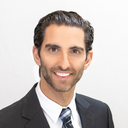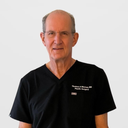Posted underFacelift q&a
Wanted the platysma sewn together, but surgeon doesn't do it anymore. Opinions?
I'm having a facelift/necklift and wanted the platysma sewn toghether to get rid of the bands.But my surgeon said he doesn't do that anymore, due to the fact that they oftèn come back, and that he deals with it in some other way in the extended smas lift teqnique he uses.He said more and more surgeons stop doing it, but he was vague on how he does and if what he does is a more longlasting method. So is there another way or even superior way to deal with the neck bands.?
Answers (7)
From board-certified doctors and trusted medical professionals

Dr. David Samimi, MD
Oculoplastic Surgeon, Board Certified in Ophthalmology
Answer

Dr. Georgios Orfaniotis MD, FRCS(Plast)
Specialist Registered Plastic Surgeon
Answer
More Facelift Questions
See all Facelift Q&AWE SEND PRETTY
EMAILS
What’s trending? Who’s turning heads? Which TikTok myths need busting? We’ve got you. No fluff, no gatekeeping—just real talk. Get our free, unfiltered newsletter.




